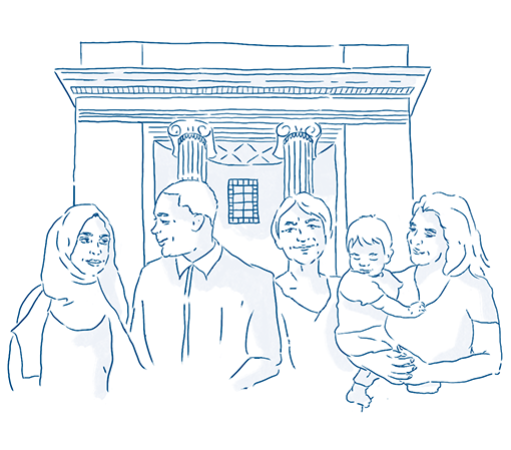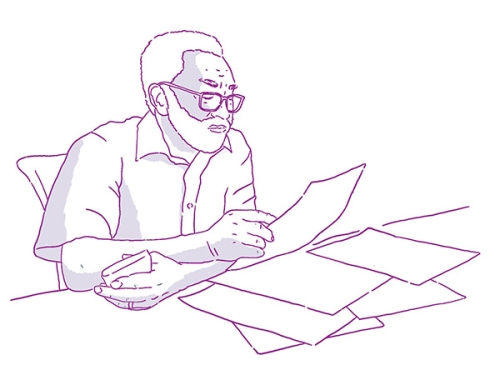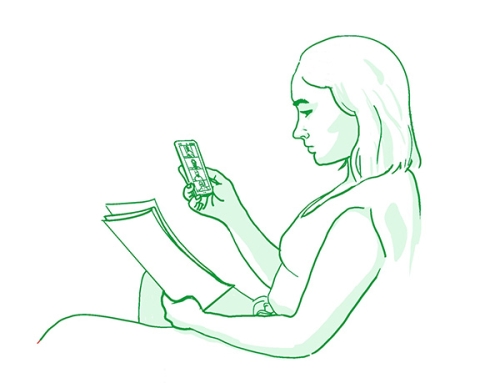Access DOJ
Designing people-centered solutions to make our services more accessible, effective, and efficient.
Millions of people interact with DOJ every day through our mission to uphold the rule of law, keep our country safe, and protect civil rights. Simplifying access to our programs, services and resources will enhance our ability to deliver on this mission.

Who We Are
Access DOJ is a department-wide initiative led by the Office for Access to Justice that works to make DOJ’s services more:
- Accessible – Ensure our information is easy for everyone to find, understand, and use.
- Effective – Address the needs of the diverse communities we serve and close justice gaps.
- Efficient – Reduce burdens on the public and DOJ staff, streamline resources, and save taxpayer dollars.
Our Approach: Designing for Access to Justice
Human-centered design (HCD) is a people-centered problem-solving process used to develop solutions that address people’s needs. Scholars, experts, and practitioners are increasingly exploring how human-centered approaches can expand access to justice.

Here's how it works:
- Learn – Review existing research and talk with the people most impacted by the justice gap about their needs.
- Create – Identify and shape solutions to help DOJ better meet those needs.
- Evaluate – Test the solution to ensure the justice gap is being closed.
What this looks like in practice:
- Usability Testing – Getting feedback from people who use DOJ’s forms, websites, and services to identify opportunities for improvement.
- Researching Best Practices – Identifying and incorporating approaches proven to expand access to justice.
- Listening Sessions – Engaging with diverse voices, including the community, advocates, legal aid providers, public defenders, and access to justice leaders to inform simplification efforts.
- Analyzing data – Reviewing data on public engagement and interaction to expand access to public-facing information.
“When government forms and processes are only accessible to lawyers or those who can afford them, everyone suffers and the justice gap widens. We remain committed to ensuring that every American can truly access the legal system, services, and benefits of this nation.”
Attorney General Merrick B. Garland
2022 Legal Aid Interagency Roundtable Report
What We Do
Access DOJ collaborates with DOJ components to make their programs, resources, and services more accessible, effective, and efficient. Here's how DOJ staff can get involved:
-
High-Impact Projects: Work with us on one of our annual high-impact projects to receive intensive planning, research and design support from Access DOJ.
-
Resources and Technical Support: Request hands-on coaching and support in methods like usability testing and plain language, and build your human-centered design knowledge and skills through Access DOJ’s resources and trainings.
-
Community of Practice: Join others across the Department who are improving services through design, share successes and challenges, and identify solutions to advance this work together.
Case Studies
Here’s how the Access DOJ initiative is making DOJ services more accessible, effective, and efficient.

In collaboration with Office of the Pardon Attorney (PARDON)

In collaboration with the U.S. Trustee Program (USTP)
Sign Up for Initiative Updates
Subscribe to our quarterly Access DOJ newsletter to stay updated on our work.

 U.S. Department
of Justice
U.S. Department
of Justice